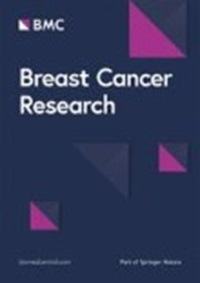Characteristics and transcriptional regulators of spontaneous epithelial–mesenchymal transition in genetically unperturbed patient-derived non-spindled breast carcinoma
IF 6.1
1区 医学
Q1 ONCOLOGY
引用次数: 0
Abstract
Although tumor cells undergoing epithelial–mesenchymal transition (EMT) typically exhibit spindle morphology in experimental models, such histomorphological evidence of EMT has predominantly been observed in rare primary spindle carcinomas. The characteristics and transcriptional regulators of spontaneous EMT in genetically unperturbed non-spindled carcinomas remain underexplored. We used primary culture combined with RNA sequencing (RNA-seq), single-cell RNA-seq (scRNA-seq), and in situ RNA-seq to explore the characteristics and transcription factors (TFs) associated with potential spontaneous EMT in non-spindled breast carcinoma. Our primary culture revealed carcinoma cells expressing diverse epithelial–mesenchymal traits, consistent with epithelial–mesenchymal plasticity. Importantly, carcinoma cells undergoing spontaneous EMT did not necessarily exhibit spindle morphology, even when undergoing complete EMT. EMT was a favored process, whereas mesenchymal–epithelial transition appeared to be crucial for secondary tumor growth. Through scRNA-seq, we identified TFs that were sequentially and significantly upregulated as carcinoma cells progressed through the EMT process, which correlated with increasing VIM expression. Once upregulated, the TFs remained active throughout the EMT process. ZEB1 was a key initiator and sustainer of EMT, as indicated by its earliest significant upregulation in the EMT process, its exact correlation with VIM expression, and the reversal of EMT and downregulation of EMT-upregulated TFs upon ZEB1 knockdown. The correlation between ZEB1 and vimentin expression in triple-negative breast cancer and metaplastic breast carcinoma tumor cohorts further highlighted its role. The immediate upregulation of ZEB2 following that of ZEB1, along with the observation that the knockdown of ZEB1 or ZEB2 downregulates both ZEB1 and ZEB2 concomitant with the reversal of EMT, suggests their functional cooperation in EMT. This finding, together with that of a lack of correlation of SNAI1, SNAI2, and TWIST1 expression with the mesenchymal phenotype, indicated EMT-TFs have a context-dependent role in EMT. Upregulation of EMT-related gene signatures during EMT correlated with poor patient outcomes, highlighting the biological importance of the model. Elevated EMT gene signatures and increased ZEB1 and ZEB2 expression in vimentin-positive compared to vimentin-negative carcinoma cells within the corresponding primary tumor tissue confirmed ZEB1 and ZEB2 as intrinsic, instead of microenvironmentally-induced, EMT regulators, and vimentin as an in vivo indicator of EMT. Our findings provide insights into the characteristics and transcriptional regulators of spontaneous EMT in primary non-spindled carcinoma.基因未受干扰的患者来源非钉螺状乳腺癌自发上皮-间质转化的特征和转录调节因子
虽然在实验模型中,发生上皮-间质转化(EMT)的肿瘤细胞通常表现出纺锤形形态,但这种EMT的组织形态学证据主要是在罕见的原发性纺锤形癌中观察到的。对基因未受干扰的非纺锤形癌中自发 EMT 的特征和转录调控因子的研究仍然不足。我们利用原代培养结合RNA测序(RNA-seq)、单细胞RNA-seq(scRNA-seq)和原位RNA-seq来探索非纺锤形乳腺癌中与潜在自发EMT相关的特征和转录因子(TFs)。我们的原代培养发现癌细胞表达了多种上皮-间质特征,这与上皮-间质的可塑性是一致的。重要的是,自发发生 EMT 的癌细胞不一定表现出纺锤体形态,即使完全发生了 EMT。EMT是一个受青睐的过程,而间充质-上皮转化似乎对继发性肿瘤的生长至关重要。通过 scRNA-seq,我们确定了随着癌细胞经历 EMT 过程而连续显著上调的 TFs,这与 VIM 表达的增加相关。一旦上调,TFs 在整个 EMT 过程中都会保持活跃。ZEB1是EMT的关键启动因子和维持因子,这表现在它在EMT过程中最早显著上调、它与VIM表达的确切相关性,以及在敲除ZEB1后EMT逆转和EMT上调TF下调。ZEB1与三阴性乳腺癌和移行细胞乳腺癌肿瘤队列中的波形蛋白表达之间的相关性进一步凸显了ZEB1的作用。ZEB2 在 ZEB1 上调后立即上调,同时观察到 ZEB1 或 ZEB2 被敲除后,ZEB1 和 ZEB2 均下调,与 EMT 的逆转同时发生,这表明它们在 EMT 中的功能性合作。这一发现以及SNAI1、SNAI2和TWIST1的表达与间充质表型缺乏相关性,表明EMT-TFs在EMT中的作用与环境有关。EMT过程中EMT相关基因特征的上调与患者的不良预后相关,突出了该模型的生物学重要性。在相应的原发肿瘤组织中,与波形蛋白阴性癌细胞相比,波形蛋白阳性癌细胞中EMT基因特征的升高以及ZEB1和ZEB2表达的增加证实了ZEB1和ZEB2是内在而非微环境诱导的EMT调节因子,而波形蛋白则是EMT的体内指标。我们的研究结果为了解原发性非棘细胞癌自发EMT的特征和转录调控因子提供了见解。
本文章由计算机程序翻译,如有差异,请以英文原文为准。
求助全文
约1分钟内获得全文
求助全文
来源期刊

Breast Cancer Research
医学-肿瘤学
自引率
0.00%
发文量
76
期刊介绍:
Breast Cancer Research is an international, peer-reviewed online journal, publishing original research, reviews, editorials and reports. Open access research articles of exceptional interest are published in all areas of biology and medicine relevant to breast cancer, including normal mammary gland biology, with special emphasis on the genetic, biochemical, and cellular basis of breast cancer. In addition to basic research, the journal publishes preclinical, translational and clinical studies with a biological basis, including Phase I and Phase II trials.
 求助内容:
求助内容: 应助结果提醒方式:
应助结果提醒方式:


